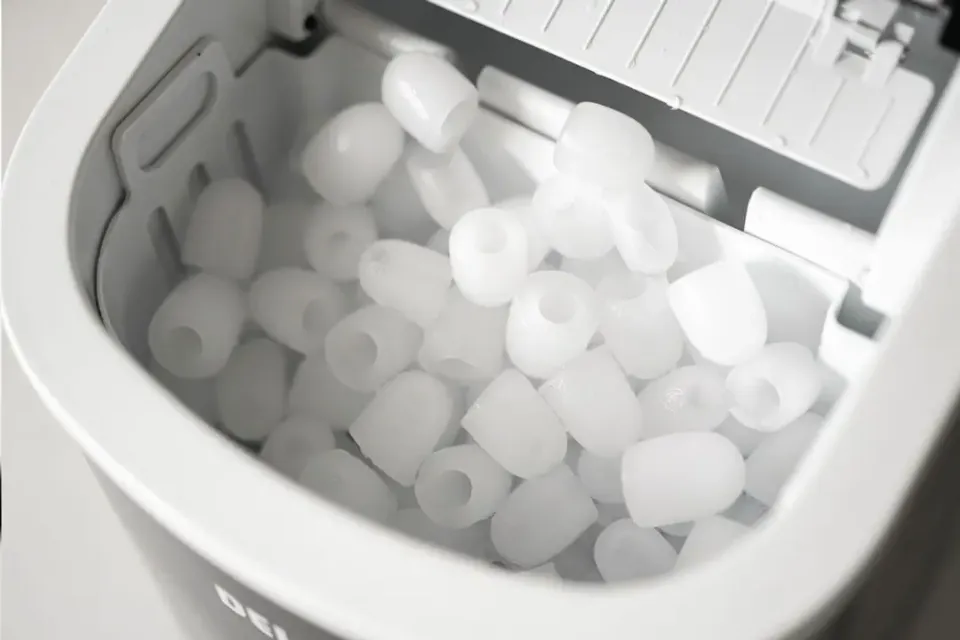Continue reading to find out more about our detailed instructions for maintaining your portable ice maker and everything you’ll need to finish the cleaning.
An ice maker is one of the most essential appliances in the modern home, and even though it may seem like a pointless purchase, it’s important to think about how much ice you use frequently.
However, like other appliances, an ice maker needs to be cleaned regularly for its efficiency to be maintained. For optimal operation and performance, your ice maker needs to be cleaned on a regular basis. The user manual that came with your appliance contains detailed instructions on how to clean your particular model of ice maker.
Hence, we’ll be discussing some easy ways how to clean a portable ice maker using simple supplies found in all households.
What Do You Need to Clean Your Portable Ice Maker?
Although cleaning your ice maker is a simple process, it can take quite a while. In order to get started, let’s go over the supplies you’ll need.
- White vinegar or specialist cleaning solution
- Q tips / Toothbrush
- Soft cloth
- Spray bottle (optional)
You are aware of your supplies now. Let’s begin with the detailed instructions. This procedure is straightforward to comprehend and straightforward to repeat.
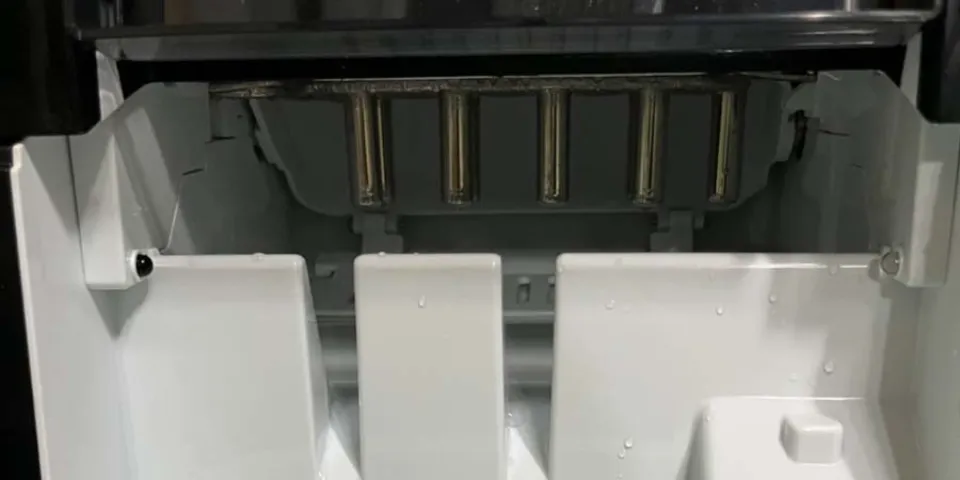
Step-by-Step Guide to Cleaning Your Portable Ice Maker
Your ice maker will become spotless by following these nine steps without putting in a lot of effort.
Turn Off the Appliance
It’s incredibly easy but crucial to start with this step when learning how to clean a countertop ice maker. Before starting any cleaning cycle, make sure your machine is turned off and unplugged.
Drain Reservoir
Your ice maker should now be positioned over your sink so that the (typically white) plug or stopper in the back, bottom, or side is exposed. Remove the plug to drain the water.
Add Cleaning Solution
It’s time to get some cleaner in there now that your appliance has been drained. Some people prefer to use a homemade vinegar solution or a combination of baking soda and warm water to a conventional ice maker cleaning solution.
Further Reading: How Does An Ice Maker Work?
A 1:1 vinegar-to-water ratio is ideal. By doing so, the machine will be cleaned and descaled. Use filtered water when cleaning instead of tap water because it will prevent limescale buildup.
While these alternatives will clean your appliance reasonably well, they won’t be as effective at removing structured limescale buildup or sanitizing your machine as a cleaner that was made especially for the job.
Remove the storage container and pour the mixture into the reservoir to finish this step. To avoid flooding or leaking, be careful not to fill the reservoir past the maximum capacity.
Run An Ice-making Cycle
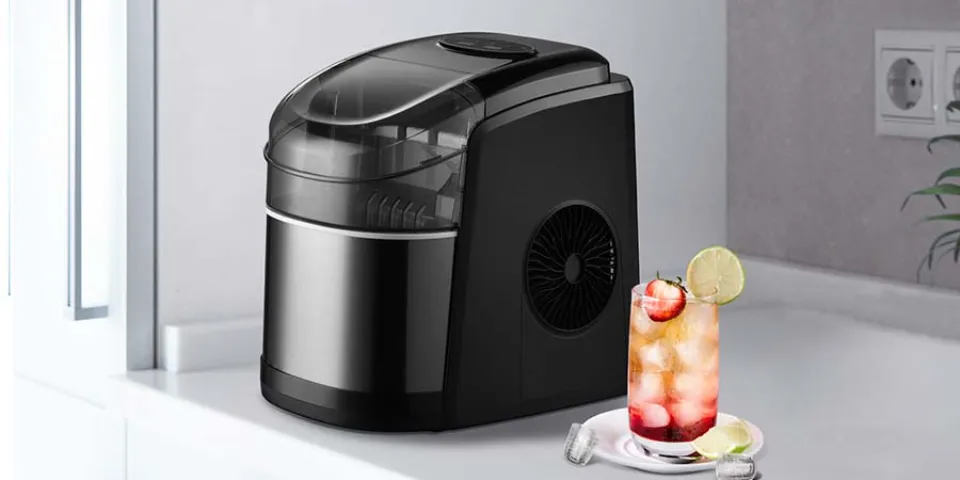
It’s time to reconnect the machine’s power cord and finish the ice-making cycle now that you have a cleaning solution in the machine’s reservoir. This will enable the cleaning agent to reach all areas of your machine.
A good idea is to run 2-3 cycles, though, to make sure the cleaning solution has reached every part of your appliance. Alternately, run your machine until it has consumed about half of the liquid in its reservoir. The ice produced at the end of each cycle should be thrown away because it contains chemicals.
Clean the Storage Basket
While waiting for those cycles to finish, you can start giving your storage basket a thorough cleaning; a soft cloth works great for this task. Alternately, letting it soak in a bucket of warm, soapy water is equally effective.
Scrub Your Machine
After your portable ice maker has completed those cleaning cycles, it’s time to unplug it once more, drain the cleaning solution, and begin scrubbing. Wipe the reservoir, lid, and other internal components of the machine with your soft cloth and cleaning solution.
For tighter spaces, such as those hidden behind the prongs, use a toothbrush and Q-tips. These tools will remove dirt without endangering the parts of your machine. A spray bottle filled with a cleaning solution can be used to remove any dirt from confined spaces.
Additionally, this is a good time to quickly clean your machine’s exterior. If it is not cleaned off, any dirt that may be hiding on the ice maker’s exterior may begin to move inside. However, it would be best to look for specialized wipes or cleaners for stainless steel if your exterior is made of this material.
Rinse It Off
Let’s give your machine a little spritz after you’ve completed a few cleaning cycles and entered the area with your cloth.
If your sink has a detachable tap or sprayer feature, you can blast the cleaning solution and wash the mess away while you’re there. However, using filtered water is preferable if you can, as we mentioned in step 3.
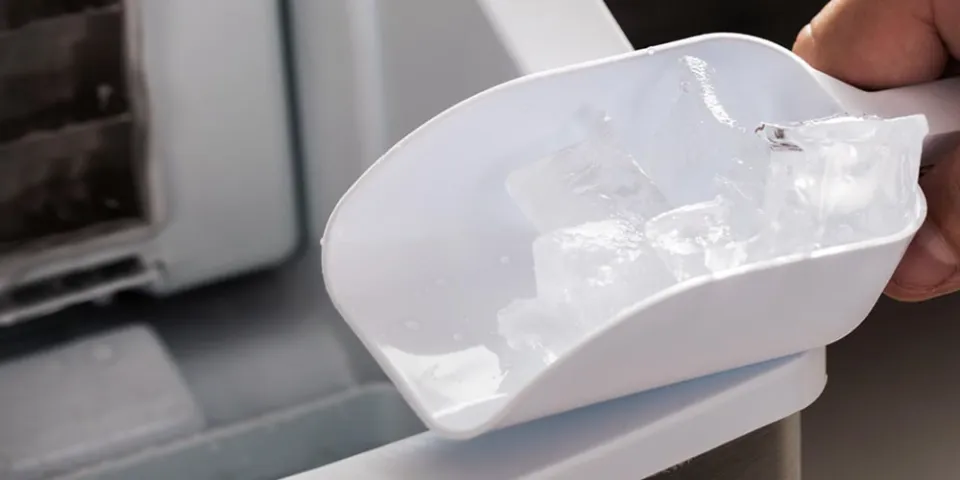
Once more, it can be incredibly helpful to blast out the cleaner from the tougher spots if you fill up your spray bottle with fresh water.
Another great tip is to rinse your appliance with cold, fresh water after cleaning your appliance with a vinegar solution.
Acidic substances like vinegar, fish, and garlic produce odors that cold water is better able to remove. After using hot water to wash your hands after preparing fish or garlic, the stronger smells can end up cooking into them, which is why it may take a while for your hands to stop smelling funky.
Run More Cycles
Reconnect the machine’s power and run it through 3–4 more cycles to completely wash out the cleaning agents. This is also a good last step if you’ve used a homemade solution to make sure your machine and ice don’t taste or smell like vinegar.
Dry the Interior
The interior of your ice maker needs to be dried next. This is the perfect time to use a dry, clean kitchen towel. Simply go through wiping down all the areas you touched with the soft cloth.
One More Cycle
Run one more cycle and discard the ice as the next step in our guide to cleaning your ice maker. This will guarantee that nothing from your drying cloth got stuck anywhere in the machine. Additionally, it will ensure that both the inside and outside of your machine are spotless.
How Do You Know When It’s Time to Clean Your Ice Maker?
When to clean your appliance will be apparent to you. However, if you’re unsure, there are some key factors to watch out for:
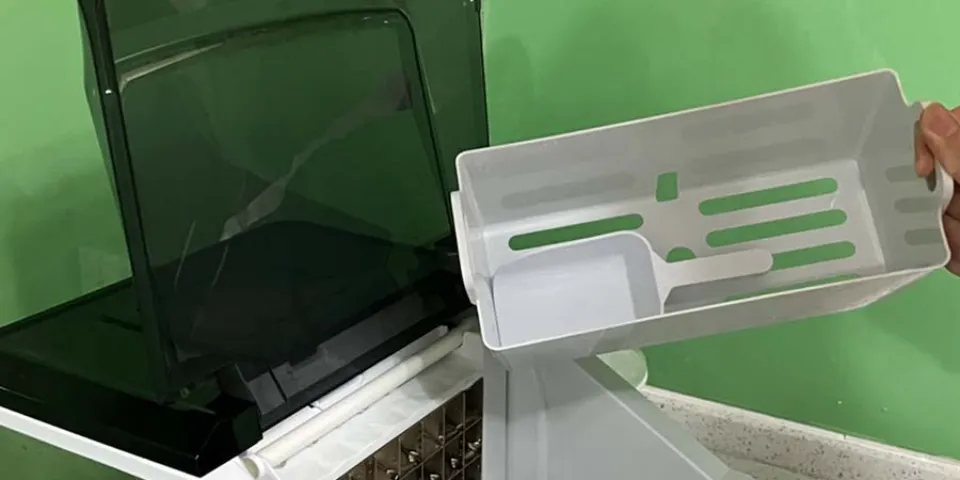
- Your ice starts smelling funky
- There’s black stuff in your machine (potentially mold)
- The ice produced is smaller or softer than normal
- The machine doesn’t release ice
- Harvests or cycles take longer to complete
- You’re getting cloudy ice
To add to that last point, some ice makers do have a tendency to produce cloudy ice on a regular basis. Therefore, it would be wisest in this situation to keep an eye out for other indications. Alternately, perform standard cleans.
Why Should You Clean Your Ice Maker?
Your ice maker will function at its peak when it is regularly maintained and cleaned, just like most other devices. Not cleaning up your ice maker regularly may result in the build-up of undesirable substances such as limescale, mineral deposits, mold, and other such impurities.
applies equally to all types of ice makers, whether they are used for domestic or commercial purposes to make flake, sonic, or cube ice.
The buildup of all these impurities may eventually cause your ice to appear cloudy, melt quickly, or have an unpleasant odor. You must research how to clean a portable ice maker once you start receiving ice from your ice maker that meets these requirements.
Benefits of Cleaning Your Ice Maker
The advantages listed below will persuade you to clean your ice maker on a regular basis without fail if you’re still on the fence about it.
Clear and Pure Ice
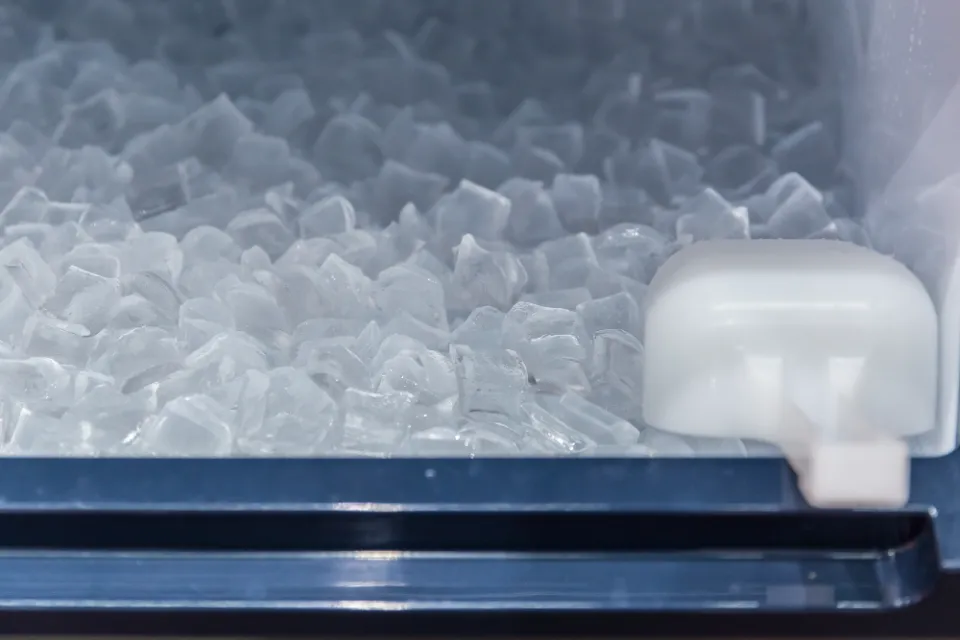
Once you go a while without cleaning your ice maker, you’ll start to realize that the ice you get out of it isn’t as clear and pure as it used to be. Cleaning your ice maker every now and then will ensure that your ice is completely transparent without the presence of impurities giving it that cloudy appearance we’ve previously talked about.
It is even more crucial for you to clean your ice maker frequently if it was sold to you as a clear ice maker.
This eventually leads to your ice tasting fresh as well, without it absorbing impurities present in the ice maker, giving it a vaguely unpleasant taste and odor. Utilizing purified water when making ice is also beneficial because it can result in even cleaner ice produced by your ice maker.
No Water Borne Health Concerns
Naturally, once you understand the inner workings of an ice maker, you’ll realize that it can accumulate impurities quite quickly.
Since water is primarily used in the ice maker’s processes, contaminants like mold have a breeding ground because of the moisture and accumulate as a result, having a significant negative impact on your health by absorbing and developing odd tastes and odors.
Increased Durability
One of the most important determining factors in the working of your ice maker is how long it can last while working at optimal efficiency. If you do not manage to clean your ice maker regularly, the durability of your ice maker slowly dwindles, and it starts to function at subpar efficiency.
How Often Should a Portable Ice Maker Be Cleaned?
While the answer to this question largely depends on how often you use your ice maker, it is recommended that you clean it every month – or even less than that, if you’re using it heavily.
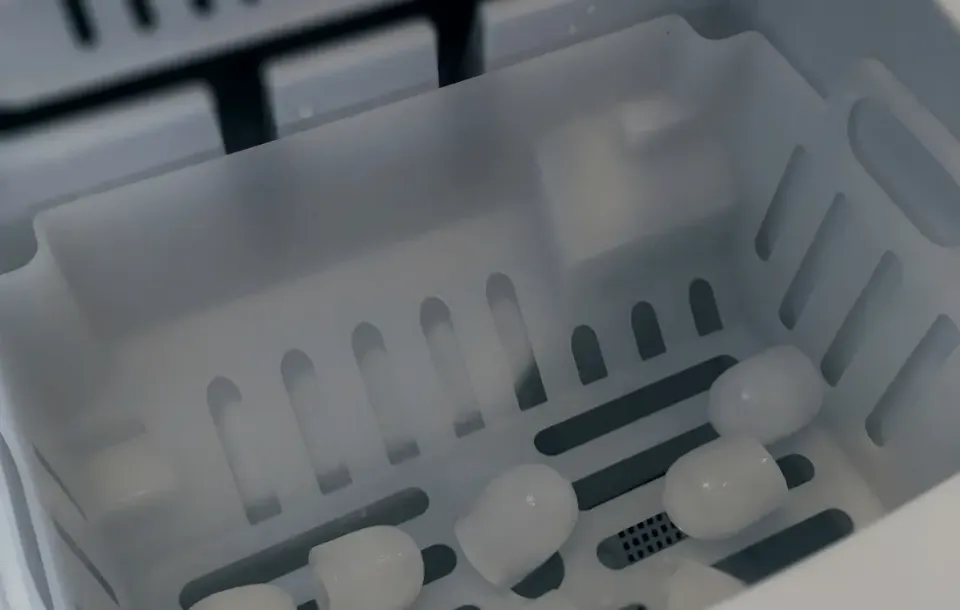
At the most, however, you should be cleaning your ice maker once in three to six months – since delaying the cleaning procedure further than that can lead to the buildup of the aforementioned dirt and grime that we’ve previously talked about.
Furthermore, if the quality of your ice starts to deteriorate, as evidenced by an unpleasant odor or cloudy appearance, you can try cleaning your ice maker.
How to Maintain Your Portable Ice Maker?
Let’s look at ways to prevent your ice maker from accumulating dirt as quickly and frequently and ensure that it operates at its best, keeping in mind that prevention is always preferable to treatment.
Unplug the Ice Maker If It is Not in Use
This may seem like a no-brainer, but it has a significant impact on the longevity of your ice maker. If you’re planning to be away for an extended period of time, switching off and unplugging the ice maker can help ensure cleanliness – since keeping it plugged in is virtually pointless.
Wiping the inside of the ice maker with a dry cloth will ensure that moisture is kept away – making sure that mold does not build up in the interior of the ice maker.
Clean the Portable Ice Maker Regularly
Even though the aforementioned ice maker cleaning procedures may take some time, you are not required to follow them step-by-step every time you want to clean your ice maker.
Limescale and mold can be kept at bay by simply wiping the interior of the ice maker with a damp dishcloth. The majority of portable ice makers prevent overheating by using air-cooled mechanisms.
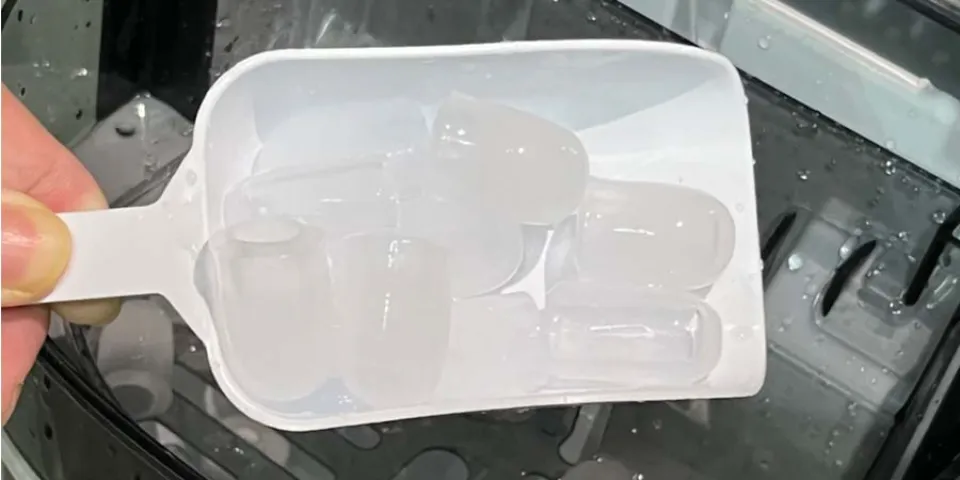
To keep the mechanism in perfect working order, you must perform periodic deep cleaning. You won’t need to go through the laborious process of taking apart your ice maker repeatedly if you carry out this task once a week.
Wash the Ice Storage Basket
The ice storage basket is that part of your ice maker that is where all of your ice is stored. Once the ice maker has made your ice, it is delivered to the ice storage basket – so naturally, it follows that you must always clean your ice storage basket in order to prevent impurities from being transferred to your ice.
It only requires a quick scrub with a mild cleaning agent and warm water, much like cleaning the ice maker as a whole.
Don’t Use Any Harsh Chemicals
Using harsh chemicals on your ice maker is something that can cause immense damage to the machine and your health in the long run. Using abrasive chemicals on the interior of the ice maker is not a good idea because they can easily affect the quality of the ice or even boiling water, which can eat away at the plastic used in the ice maker.
Descale Your Portable Ice Maker
The accumulation of hard water in your ice maker can lead to the buildup of scales in the interior parts of your ice maker – and can thus be hazardous for its efficient functioning.
The operation of the ice maker can be significantly impacted by the accumulation of calcium deposits or scales. This can be easily avoided by using procedures like using a readily available descaler or a vinegar solution that reacts with the calcium deposit and dissolves the same, effectively cleaning out the formation of scales.
Conclusion: Clean a Portable Ice Maker
An ice maker is incredibly useful for daily use, but it is obvious that in order for it to function at its best, your portable ice maker needs to be cleaned and maintained. Fortunately, the procedures to do this are very simple.
As previously stated, there’s no reason your ice maker shouldn’t be supplying you with ice-cold beverages for a decade of summers if you take the necessary precautions.
FAQs
Can You Use Other Cleaning Solutions?
Yes, there are plenty of household alternatives to commercial cleaning products, including lemon juice, white wine vinegar, regular vinegar, baking soda, and water. You can also use bleach or soapy water.
Is There a Filter on a Portable Ice Maker?
Portable ice makers do not come with water filters built-in. The ice you make in an ice maker will be cleaner and healthier to drink if you use filtered water. The ice maker will remain cleaner and require less maintenance as a result.
Do Portable Ice Makers Get Moldy?
Mold and slime form because ice machines provide a damp and dark environment where they can thrive. Flour, yeast, and airborne dust in commercial kitchens provide an endless supply of food for these growths to keep thriving.
How Long Do Portable Ice Makers Last?
A daily-used ice maker, however, will rarely last more than ten years. A safe estimate would be roughly 4 to 5 years, or within the warranty of the machine. However, there is no guarantee after the warranty. Make sure to carry out regular maintenance and cleaning to increase the lifespan of your ice maker.


